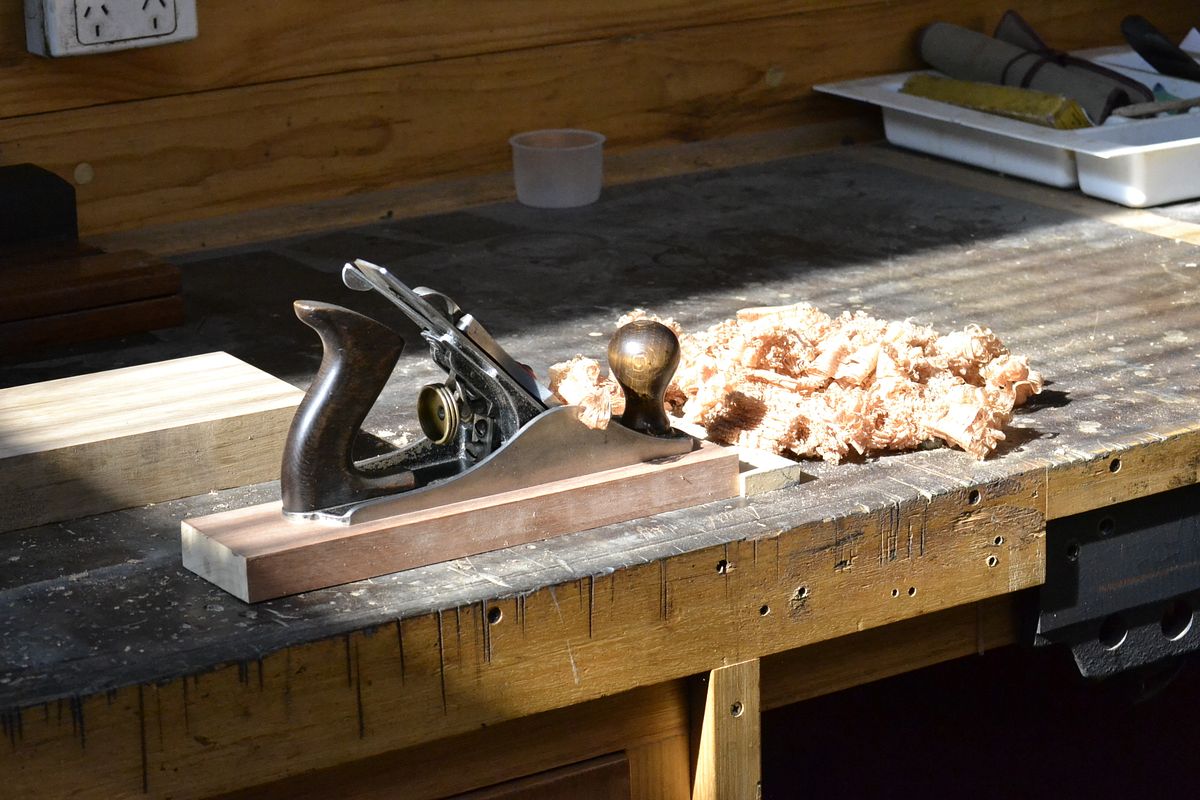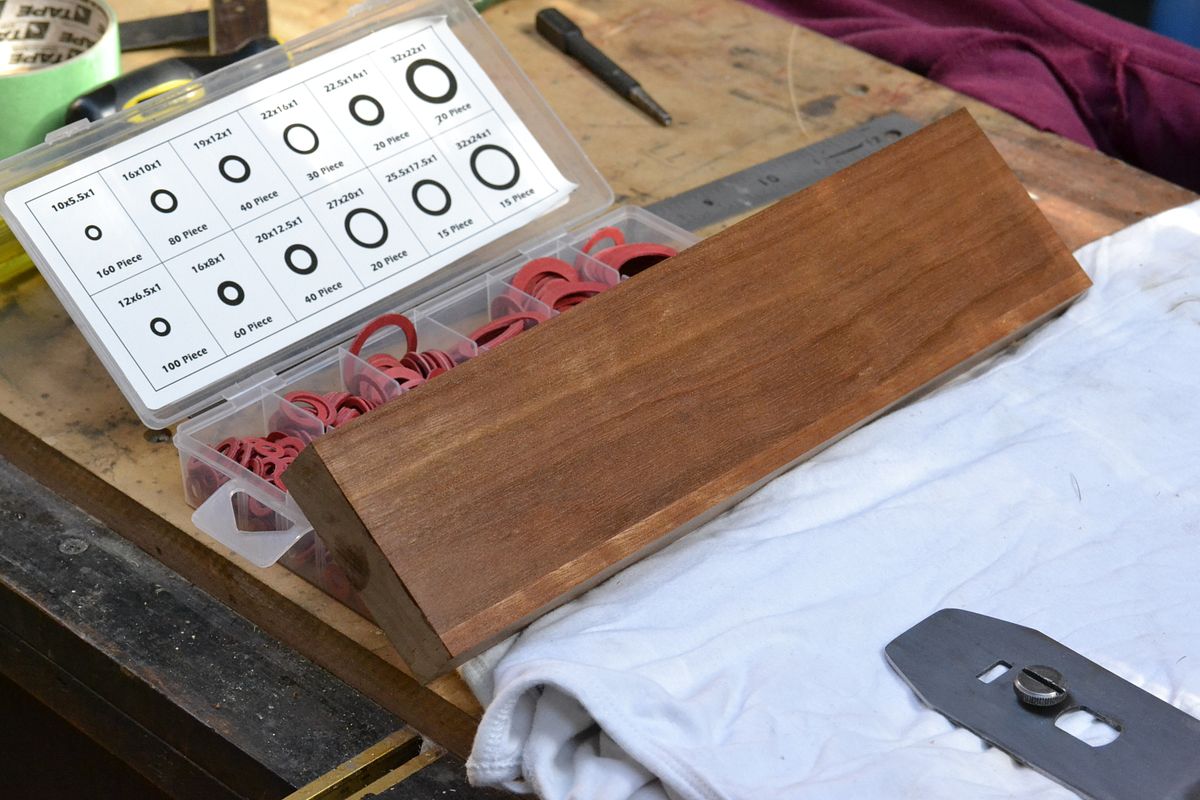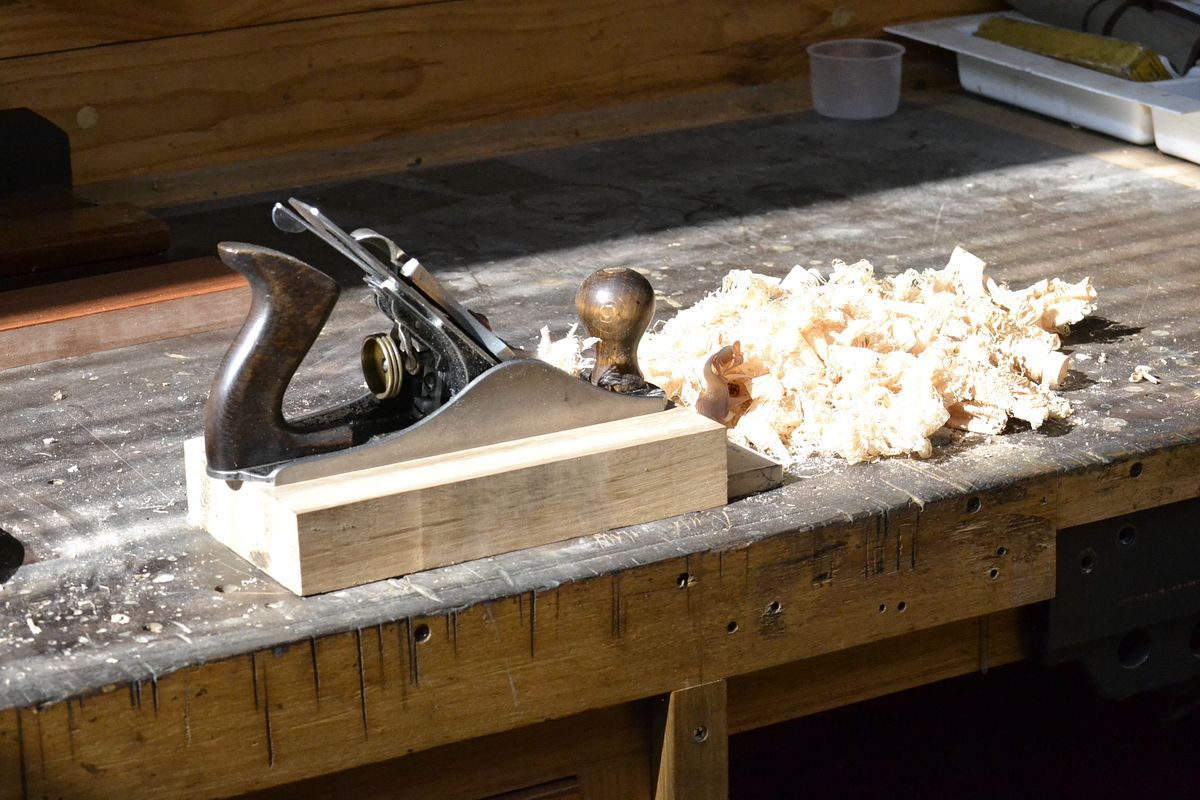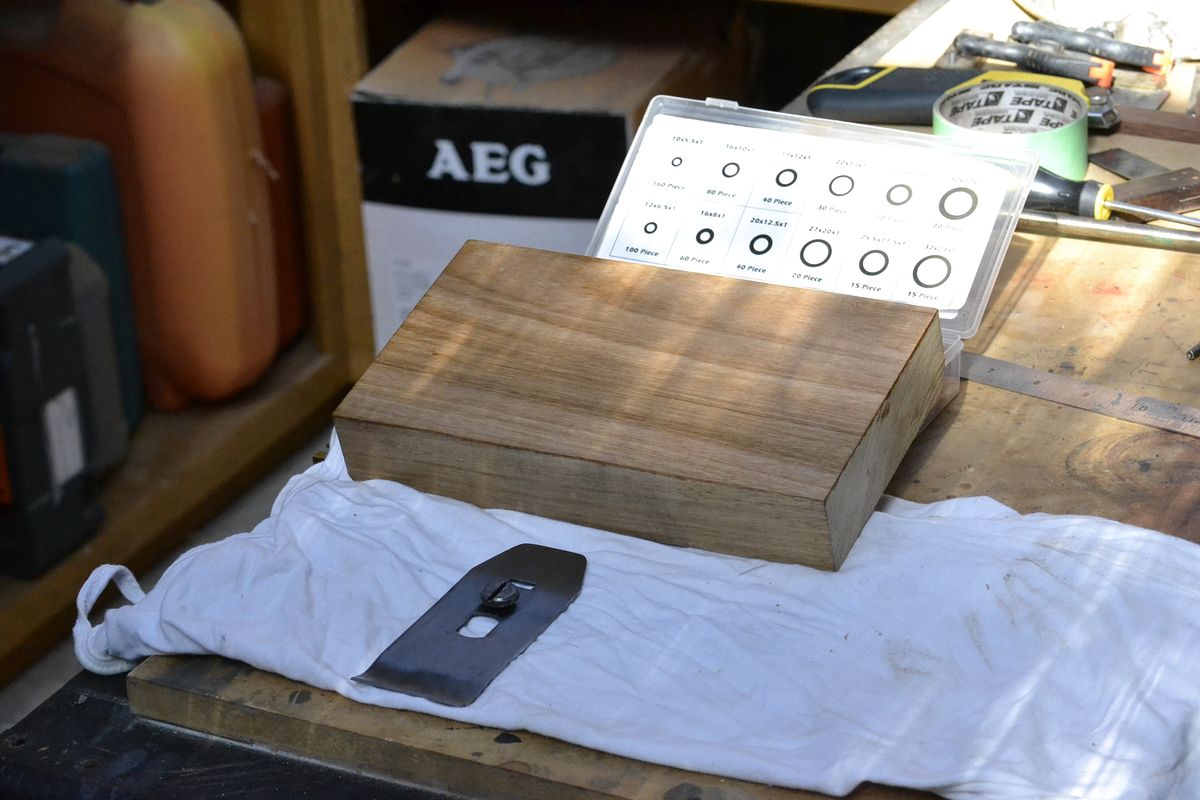From 'Modern Practical Joinery' by George Ellis, first published 1902, page 13;
"The common Wooden Stock plane is comparatively low in price, and will stand rough usage better than either of the others, being in fact practically indestructible. It works rapidly and easily, and can be adjusted by means of the cover iron to suit hard or soft woods. On the other hand, it will not produce so highly a finished surface as a metal plane; and it requires frequent shooting, and remouthing occasionally, to keep it in good condition. The English form of the metal plane will produce work of the highest class. It is of great weight and solidity, the latter quality having a great bearing on its results. It overcomes the resistance of cross-grain and knots easily by its great momentum, and "tearing out" is prevented by the extremely fine mouth. Its disadvantages are, that it is fatiguing to work, the friction between metal and wood is greater than between wood only, and in common with all metal planes, in our moist atmosphere it is difficult to keep free from rust or Verdigris, as it is made from steel or brass; and lastly, its first cost is relatively high.
The American type has for its chief recommendation cheapness and readiness of adjustment. It is easy to work in consequence of its lightness, but this quality also acts detrimentally in causing it to "chatter", which prevents the production of so high a finished surface as the English form is capable of. However, its general results are higher than those of the common wood plane. Many ingenious time-saving attachments make it a rapid worker, but it is very fragile, and will seldom survive an accidental fall from the bench."
Thinking this may be a bit of anti-American sentiment, I checked a few other tool descriptions. Under Hand Saws, he writes, "The American pattern of these saws has much to commend it. The handle is thrown well forward, giving great control over the saw when used horizontally. The blade is brought under the handle, which increases the stroke and reduces the liability of "kicking" or catching of the heel in the cut on the return stroke."
So no xenophobia there. Just an honest assessment by an experienced craftsman.
Wells and Hooper in 'Modern Cabinet Work' suggest a set of wooden bench planes, "Iron smoother plane, English make" and "Iron panel plane, 12 1/2", English make" in their list of tools. On page 6, they write, "The American planes are lighter, and flimsy in construction compared to those of English make, and are consequently cheaper, but they do not produce such a fine surface, nor last as long"
So there we have the opinions of well-respected writers on joinery and on cabinet work of about a century ago; the joiner recognises some advantages to a lighter plane, but the cabinetmakers prefer the heavier infill type. Neither of them even mention sharpening, but as they recommend the heavier-ironed woodies and infills, I think we can take it that they don't really regard any extra grinding time as a serious disadvantage.








